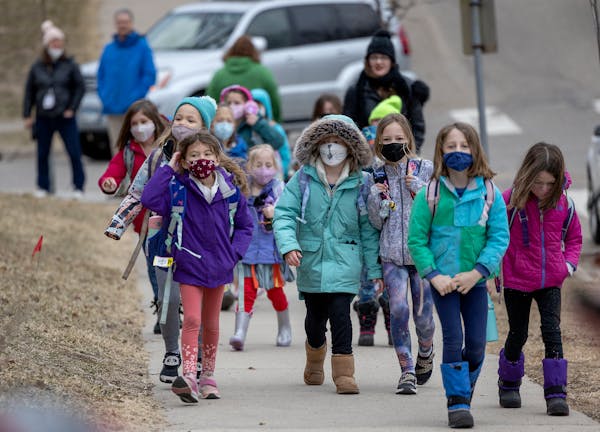While COVID-19 cases remain low in Minnesota, coronavirus levels in Twin Cities wastewater continue to increase with the BA.2 omicron subvariant making up the bulk of what's being detected.
The viral load found in sewage — a key COVID-19 barometer that has increased ahead of past infection waves — was up 73% over the past week, according to Metropolitan Council data provided Friday. The numbers are still at the lowest levels since last summer, but officials noted that the virus levels found are now doubling about every 18 days.
"There may be a slight increase in the number of cases, but certainly nothing like what we saw with the January omicron wave," said Dr. Abinash Virk, a Mayo Clinic infectious disease specialist.
The BA.2 subvariant hitting other parts of the country and world "seems less severe but much, much more transmissible," Virk said.
Samples from the Metropolitan Wastewater Treatment Plant in St. Paul show the BA.2 subvariant made up, on average, about 91% of the viral load over the course of a week, although the most recent numbers were about 95%.
"The amount of [COVID] genetic material in the wastewater entering the Metro Plant remains low, but it has been increasing for four consecutive weeks," Met Council research scientist Steve Balogh said in a statement Friday. "The increasing amount of viral material in our wastewater indicates an increasing prevalence of COVID-19 ... so in that sense, the trend is of concern."
Wastewater data has become an important pandemic measurement. While the plant doesn't provide a full picture of the state, Met Council staff noted it serves a large swath of the Twin Cities area — about 66 communities and nearly 2 million people.
While omicron subvariant cases climb in Minnesota, other new variants have been detected elsewhere in the country. Two subvariants that evolved from BA.2 are making the rounds in New York, and a few cases of omicron XE infections have been reported in the United States.
That proliferation of subvariants will continue, Virk said.
"It is a brand-new virus which is evolving very rapidly," she said. "And at some point maybe it will stabilize, and we will go back to living life as usual with some help from vaccinations."
The U.S. Department of Health and Human Services announced this week it is extending the coronavirus public health emergency, which has been in place for two years, for another 90 days. And the Centers for Disease Control and Prevention said Wednesday it would extend the federal transportation mask mandate for 15 days through May 3.
"CDC continues to monitor the spread of the Omicron variant, especially the BA.2 subvariant that now makes up more than 85% of U.S. cases," the agency said in its announcement. "The CDC Mask Order remains in effect while CDC assesses the potential impact of the rise of cases on severe disease, including hospitalizations and deaths, and healthcare system capacity."
COVID-19 hospitalizations and deaths have remained relatively low in Minnesota.
The Minnesota Department of Health reported seven deaths on Thursday, bringing the state's total COVID deaths to 12,464. There were 205 COVID hospitalizations on Thursday, including 25 in intensive care. Hospitalizations have been low for the past month and far below a peak of 1,629 on Jan. 14 when omicron was surging in the state.
"We do see the amount of virus circulating beginning to creep back up," said Kathy Como-Sabetti, COVID epidemiology section manager for the Minnesota Department of Health. "But thankfully we're not seeing a corresponding rise in hospitalizations, and we are hopeful that with many protected through vaccination and previous infection that will continue to be the case."
The Health Department reported 877 COVID-19 cases on Thursday. Tracking cases has become more difficult in Minnesota as people use at-home testing kits, which don't require results be reported to the state.
The state also reported that 49% of Minnesotans age 5 and older are up to date on their shots as of Thursday, meaning they have gotten all the doses they are eligible to receive. Nearly 75% have received at least one dose.
At the end of March, the Food and Drug Administration authorized an extra dose of the Pfizer or Moderna vaccine for people 50 and older.
Como-Sabetti and Virk urged people to get the vaccine and boosters as soon as they are eligible and to follow public health guidelines such as staying home when they are sick.
"There will be a slight uptick and people do have an opportunity to go get their vaccination and get additional protections," Virk said, noting that one person's infection can ripple across a community. "That whole domino is preventable if people take precautions."

Northern lights dance across the Minnesota sky

'Watching history happen': New Minnesota flag flies at Capitol

Live: Updates and photos from the Minnesota fishing opener

